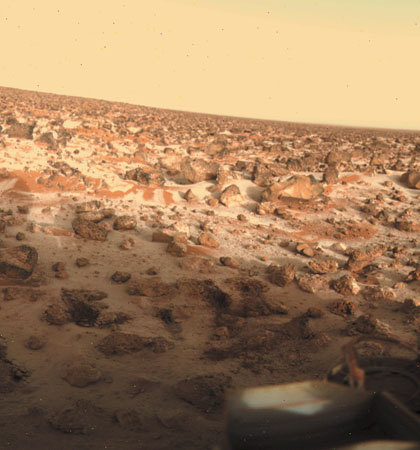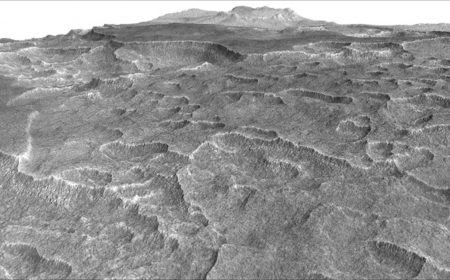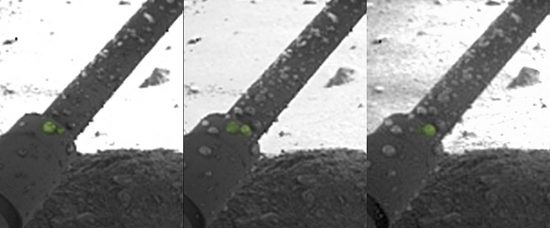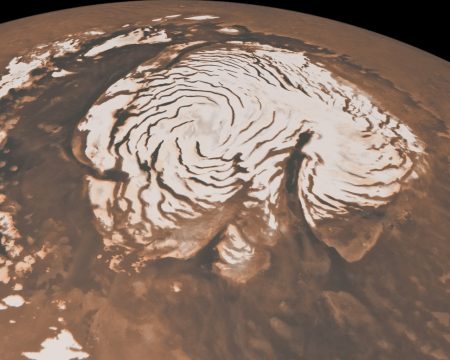November 25, 2016 – The biggest freshwater lake in the world is Lake Superior. Its surface area is 82,100 square kilometers (31,700 square miles). That’s larger in area than Vermont, New Hampshire, Massachusetts, Connecticut and Rhode Island combined. Its maximum depth is 406 meters (1,333 feet). And the total water volume equals 10% of all of the surface freshwater on Earth, or a sufficient amount to flood all of the North and South American continents to a depth of 30 centimeters (approximately 1 foot).
Discovering a water mass that large on Mars, therefore, can be considered a big deal.
It is not the first water to be found on the planet. The Viking 2 landed in the locale of the ice mass discovery but it didn’t have instrumentation to do a scan of the geology beneath. What it did do, however, is send us the first pictures ever seen by humans of Martian ground frost (see picture below).

Phoenix took pictures of condensed water on one of its surfaces (see three images below), and uncovered ice that when exposed to Martian air evaporated.
And Mars sports two polar ice caps (the northern one can be seen in the picture below) approximately 3 kilometers thick containing enough water to cover the entire planet to a depth of 5.6 meters (18 feet).
So what’s the fuss?
The water the Mars Reconnaissance Orbiter discovered using its ground-penetrating SHARAD radar is buried under Utopia Planitia, “Plains of Paradise” at a latitude between 39 and 49 degrees north. It is in the form of ice and varies in thickness from 79 and 171 meters (260 to 560 feet). The overlay varies from 1 to 10 meters (3.3 to 33 feet) in thickness making it easy to access. Far more hospitable and accessible than the polar ice caps, human visitors to Mars could turn this discovery into a critical resource.
The volume of water stored underground is twice as large as any other known buried ice sheets on the northern half of the planet and is close enough to the surface to be tapped. Spectographic analysis shows that it is betweeen 50 and 85% water ice with the remainder dust and mixed solids. The location is an area that is relatively flat making it a suitable place for a spaceship to touch down.
The ice can serve a human team of explorers in many ways. It can be a source of freshwater. Oxygen can be extracted from it. And hydrogen for making rocket fuel or for fuel cells.
Sampling the ice by drilling ice cores will give us a much better picture of Mars’ geological history. At the same time there may be life hibernating or active within the ice.
The discovery was reported in the journal Geophysical Research Letters. Lead author, Cassie Stuurman, Institute for Geophysics, University of Texas, Austin, speculates on the origin of the ice. “This deposit probably formed as snowfall accumulating into an ice sheet mixed with dust during a period in Mars history when the planet’s axis was more tilted than it is today.”
Mars today has an axial tilt of 25.1 degrees, about 2 degrees more than Earth’s. But unlike Earth which has only a small axial wobble, about every 120,000 years Mars tiltsas much as twice 25 degrees. With a 50 degree tilt the polar ice caps heat up and melt and moisture condenses out to form ice at middle latitudes. The speculation is the frozen mass formed during one of those high-tilt periods.











